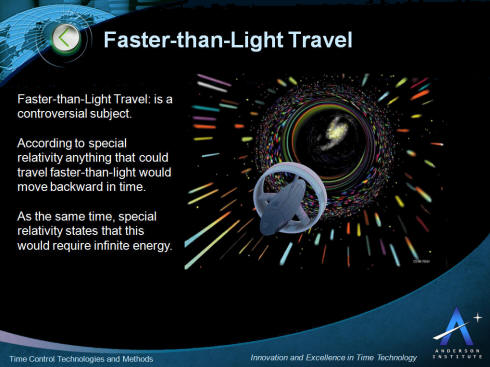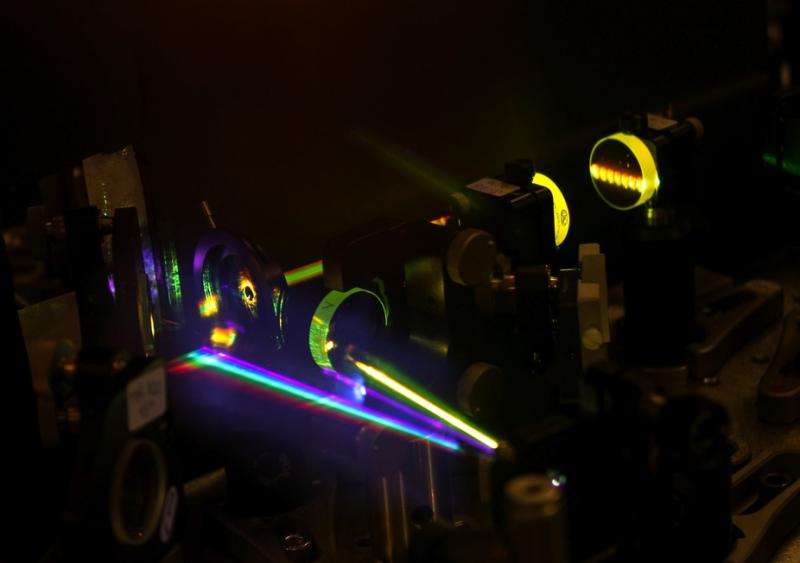

However, this method produces a lot of noise data, while providing only minimal improvements on the speed of light. The leading edge of that curve can't exceed the speed of light, but the main hump, the peak of the pulse, can be skewed forward or backward, arriving sooner or later than it normally would,” NIST scientists say.īy amplifying the leading edge of a light pulse and cutting off the back end, it is possible to create faster-than-light light. “A short burst of light arrives as a sort of (usually) symmetric curve like a bell curve in statistics. By careful tuning of the light source and advanced calculations, it is possible to nudge portions of the light pulses so that they arrive at their destination ahead or behind the main pulse.

They say that a sort of loophole exists in this theory. The physicists explain that the new research does not violate Albert Einstein’s theory on general relativity – which states that the speed of light in a vacuum is the fastest achievable in the Universe. According to the research team, the achievement could be used to significantly improve the timing of communications signals.įurthermore, the work could provide additional insight into the propagation of quantum correlations. The speed comparison is usually conducted between light waves that travel without being altered, and photon pulses that are partially reshaped and altered. This makes the light move forward faster than it normally would when traveling through a vacuum. The technique developed at NIST is called four-wave mixing, and it works by altering some parts of each individual light pulse. Recently, scientists at the US National Institutes of Standards and Technology (NIST) have developed a new way of creating such superluminal pulses.ĭetails of their research appears in a paper entitled “Stimulated generation of superluminal light pulses via four-wave mixing,” which was published in the April 26 online issue of the esteemed scientific journal Physical Review Letters. The researchers believe the system could work for not just light, but other kinds of waves like sound.Light pulses that in some ways travel faster than the speed of light can be produced artificially. Which means that now we could not only stop the light and hold it there, but release it and ramp it back up to its regular speed without ever losing any of its intensity-a level of consistency and control not offered through previous models.īy tweaking the gain-loss parameters, the technique could be adapted to light of any and all frequencies and bandwidths, making it much more versatile than other light-stopping methods scientists have created in the past, according to. Parity-symmetric waveguides can keep the light's intensity steady and symmetric as it arrives at an exceptional point, the place where two incoming sources merge into a single pathway. What the team discovered is that such losses can be eliminated if a waveguide is designed with parity-time symmetry, a relatively new concept that refers to maintaining a constant balance, or symmetry, between a system's energy losses and gains.

The problem is that the process of slowing down light tends to sap its intensity. A waveguide, meanwhile, is a confining tube-like structure, which, as the name suggests, guides the waves sent inside it (any kind of waves, but in this case optical waves). Photonic crystals are materials perforated with billions of tiny holes through which light refracts, according to Reader's Digest. But it's the second method that allowed the researchers to make their breakthrough. When the laser is abruptly switched off, a slow pulse of light is imprinted onto the atoms, essentially bringing the light to a halt by absorbing it the imprinted shape can then be converted back into a photon. The first involves aiming a laser into a cloud of ultracold sodium atoms, the researchers wrote in their paper. Existing research shows us that light can be slowed to an infinitesimal fraction of its vacuum speed in two ways, according to the new paper: trapping it inside either ultracold atom clouds or inside waveguides made with photonic crystals.

Slow-light technologies could help improve our telecommunications systems, as well as our quantum computers.


 0 kommentar(er)
0 kommentar(er)
